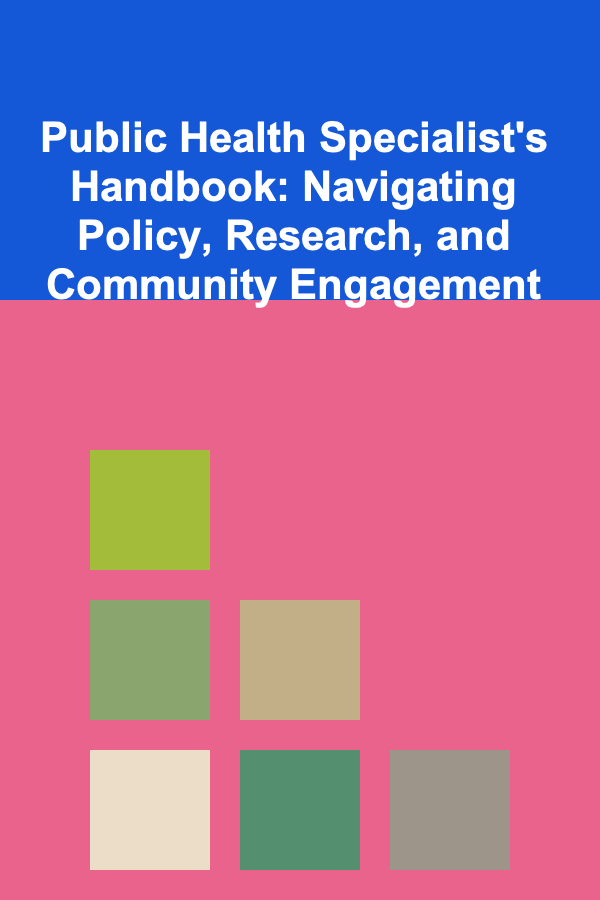
How To Practice Yoga for Emotional Release
ebook include PDF & Audio bundle (Micro Guide)
$12.99$7.99
Limited Time Offer! Order within the next:

Yoga is a practice that has been around for thousands of years, primarily used for physical health, mental clarity, and spiritual enlightenment. While yoga's physical postures, or asanas, are often the focal point of most modern practice, the emotional and psychological benefits of yoga are equally profound. The ability of yoga to facilitate emotional release has been increasingly recognized in recent years. Many people have found that the practice can serve as a powerful tool for emotional healing, stress relief, and self-discovery.
In this article, we will explore how to practice yoga specifically for emotional release. We will look into the connection between body and emotions, how yoga can help process emotions, specific yoga poses that support emotional release, and practical tips to integrate yoga into your emotional wellness routine.
The Connection Between Emotions and the Body
Before delving into how to practice yoga for emotional release, it's important to understand why emotions are tied to the body in the first place. Emotions are not just abstract mental experiences; they often manifest physically. When we experience emotions, whether positive or negative, they can affect our body in a variety of ways. This may include:
- Tension and tightness in muscles: Stress, anxiety, and anger may manifest as tight shoulders, a stiff neck, or a clenched jaw.
- Breathing patterns: Fear and anxiety can lead to shallow, rapid breathing, while sadness and depression may cause slower, deeper breathing.
- Posture: Emotions like shame or guilt can cause a person to hunch over, while feelings of confidence may lead to an open, expansive posture.
This mind-body connection is fundamental in understanding how yoga can be a tool for emotional release. By moving the body in specific ways, we can help release built-up tension and emotions that have been stored in the body. Yoga, through its combination of movement, breathwork, and mindfulness, allows individuals to access and process emotions that may be stored in various parts of the body.
How Yoga Facilitates Emotional Release
Yoga facilitates emotional release in several ways, some of which are quite subtle and may not always be immediately evident. Here are the key ways yoga works to release emotional tension:
1. Mindfulness and Awareness
The practice of mindfulness, which is central to yoga, encourages awareness of both the body and mind. This awareness allows individuals to observe their emotions without judgment, which is a crucial first step in releasing them. Often, emotions can become repressed or ignored, especially if they are painful or difficult to face. Yoga creates a space where individuals can safely confront and process their emotions.
As you move through the yoga practice, the focus on the breath and bodily sensations helps you stay present. This presence fosters a deeper connection to your inner world, enabling you to notice the emotions that arise during the practice.
2. Breathwork (Pranayama)
Breathing exercises, or pranayama, play an essential role in yoga's emotional healing process. Breath is often considered the bridge between the body and mind. Specific pranayama techniques can help regulate the nervous system, calm the mind, and release stored emotional energy. Deep, intentional breathing helps stimulate the parasympathetic nervous system, which induces relaxation and counteracts the body's stress response.
For instance, Alternate Nostril Breathing (Nadi Shodhana) helps balance the nervous system and calm the mind, while Lion's Breath (Simhasana) releases tension from the jaw and throat area, which is often a place where emotional blockages can reside.
3. Movement and Emotional Expression
The physical postures in yoga can serve as a way to unlock emotions stored in the body. By engaging in certain poses, we can release areas of tension, which may allow emotions to flow freely. This is why it's not uncommon to experience an emotional release, such as crying, during or after a particularly intense yoga session.
For example, Heart-Opening Poses like Camel Pose (Ustrasana) and Cobra Pose (Bhujangasana) are known to stimulate the chest and throat, areas where emotions like grief, sadness, and fear are often stored. Opening these areas can lead to a release of pent-up emotions.
4. Creating Safe Space for Vulnerability
Yoga allows individuals to explore vulnerability in a safe, non-judgmental space. The practice encourages acceptance and self-compassion, which are critical components of emotional release. As you explore difficult emotions, yoga offers a supportive environment where you can be gentle with yourself and practice letting go of resistance. The practice of yoga creates a sanctuary for emotional processing, and over time, this can lead to profound emotional healing.
5. Emotional Release Through Shaking or Movement
Some forms of yoga, like Trauma-Sensitive Yoga, focus on encouraging the body to release stored trauma through physical movement. This can involve gentle shaking, bouncing, or making sounds, which allow the body to release emotional tension. These practices are particularly effective for individuals who have experienced trauma, as they help unearth and release emotions that may have been suppressed for years.
Yoga Poses for Emotional Release
There are specific yoga poses that can help with emotional release, depending on the area of the body that is holding onto tension. Below are some examples of poses that are particularly effective for emotional release:
1. Child's Pose (Balasana)
Child's Pose is a resting pose that helps to calm the mind and body. It is also a gentle way to release tension from the back and hips. It can be used to foster a sense of safety and comfort, allowing for emotional release. If you're feeling overwhelmed, sad, or anxious, Child's Pose can help you reconnect with yourself and access your feelings.
2. Bridge Pose (Setu Bandhasana)
Bridge Pose helps to open the chest and hips, making it an effective pose for releasing emotional tension. It can also help relieve stress and fatigue by calming the nervous system. The action of lifting the hips and expanding the chest can release feelings of grief and sadness, especially if these emotions are stored in the heart space.
3. Camel Pose (Ustrasana)
Camel Pose is a deep backbend that opens up the chest, throat, and heart. These areas are often associated with emotional blockages, such as fear or grief. By releasing the tension in these areas, Camel Pose can help individuals confront and release difficult emotions. This pose can also help with self-expression, which is crucial for emotional healing.
4. Savasana (Corpse Pose)
Savasana, often performed at the end of a yoga practice, is essential for integrating the benefits of the practice and allowing the body to rest and heal. In Savasana, the body lies completely relaxed, which allows for deep emotional release. The stillness and peace of this pose give the body a chance to process emotions that may have come up during the practice.
5. Cat-Cow Pose (Marjaryasana-Bitilasana)
Cat-Cow Pose is a gentle flow that alternates between arching and rounding the spine. This movement is excellent for releasing tension from the back, shoulders, and neck---areas where many people carry stress and emotional tension. The flow between these two poses can also help to release pent-up emotions, particularly when paired with conscious breathing.
6. Legs Up the Wall Pose (Viparita Karani)
This restorative pose is excellent for calming the nervous system and releasing stress. By relaxing in this gentle inversion, you can give your mind and body a chance to decompress and release emotional tension. The posture also promotes deep relaxation and can help individuals feel grounded and peaceful.
Integrating Yoga into Your Emotional Wellness Routine
While yoga can be an incredibly effective tool for emotional release, it's important to remember that emotional healing is a journey that requires patience and consistency. Here are some tips for integrating yoga into your emotional wellness routine:
1. Consistency is Key
To see lasting results, practice yoga regularly. Whether you choose to practice daily or a few times a week, consistency helps create a deeper connection with your body and emotions. Over time, you will begin to notice subtle shifts in how you process and release emotions.
2. Set an Intention for Your Practice
Before beginning your yoga session, take a moment to set an intention for your practice. This could be something as simple as "I am open to releasing whatever no longer serves me" or "I will allow myself to feel whatever emotions arise." Setting an intention helps to align your practice with your emotional goals.
3. Incorporate Meditation and Breathwork
Yoga is most effective when combined with meditation and pranayama. Regular meditation helps cultivate a deeper sense of awareness, while pranayama breathwork helps regulate the nervous system. Together, these practices can significantly enhance emotional healing.
4. Honor Your Emotions
Yoga is not about pushing through or ignoring emotions. It's about acknowledging them and giving yourself permission to feel. If emotions arise during your practice, allow them to be felt without judgment. Cry if you need to. Shout if that's what feels right. Honor the emotional release, as it is a part of the healing process.
5. Seek Guidance When Needed
If you are experiencing deep emotional trauma or find it difficult to process certain emotions on your own, consider working with a trauma-informed yoga teacher or a mental health professional. Guided support can help you navigate your emotional journey safely.
Conclusion
Yoga is an incredibly powerful tool for emotional release. Through its combination of physical postures, breathwork, and mindfulness, yoga offers a path for healing and self-discovery. By practicing yoga with the intention of emotional release, you can unlock the emotional tension that has been stored in the body and begin to heal from within. Remember that emotional healing is a journey, and yoga is a valuable companion on that path. With regular practice, patience, and self-compassion, you can release old emotional patterns, embrace vulnerability, and move toward a more balanced and peaceful state of being.

How to Declutter Your Family Room in One Weekend
Read More
How to Sell Digital Products Successfully for Bloggers
Read More
How to Update Your Home's Plumbing During a Renovation
Read More
Navigating the Digital Landscape: Essential Skills for Today's Advertising Manager
Read More
Public Health Specialist's Handbook: Navigating Policy, Research, and Community Engagement
Read More
How to Safely Use Public Wi-Fi Networks
Read MoreOther Products

How to Declutter Your Family Room in One Weekend
Read More
How to Sell Digital Products Successfully for Bloggers
Read More
How to Update Your Home's Plumbing During a Renovation
Read More
Navigating the Digital Landscape: Essential Skills for Today's Advertising Manager
Read More
Public Health Specialist's Handbook: Navigating Policy, Research, and Community Engagement
Read More